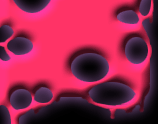|
|
| The Blood |
|
Enter subhead content here
|
 |
 |  |  |  |
 |
|
Red blood cells
Red blood cells contain hemoglobin, a complex iron-containing protein that carries oxygen throughout the body and gives blood its red color. The percentage of blood volume composed of red blood cells is called the hematocrit. The average hematocrit in an adult male is 47 percent. There are about one billion red blood cells in two to three drops of blood, and, for every 600 red blood cells, there are about 40 platelets and one white cell.
|
|
|
|
White blood cells
White blood cells are responsible for protecting the body from invasion by foreign substances such as bacteria, fungi, and viruses. The majority of white blood cells are produced in the bone marrow, where they outnumber red blood cells by two to one. However, in the blood stream, there are about 600 red blood cells for every white blood cell. There are several types of white blood cells; Granulocytes and macrophages protect against infection by surrounding and destroying invading bacteria and viruses, and lymphocytes aid in immune defense.
|
|  |
 |
|
Platelets
Platelets are very small cellular components of blood that help the clotting process by sticking to the lining of blood vessels. Platelets are made in the bone marrow and survive in the circulatory system for an average of 9 to 10 days before being removed from the body by the spleen. The platelet is vital to life, because it helps prevent massive blood loss resulting from trauma, as well as blood vessel leakage that would otherwise occur in the course of normal, day-to-day activity.
|
|  |
|
Plasma
Plasma is the liquid portion of the blood It is a protein-salt solution in which red and white blood cells and platelets are suspended. Plasma, which is 90 percent water, constitutes about 55 percent of blood volume. Plasma contains albumin, fibrinogen, globulins, and other clotting proteins.
|
|  |
 |
 |  |  |  |
|
 |

|
 |
|
Enter supporting content here
|
|

